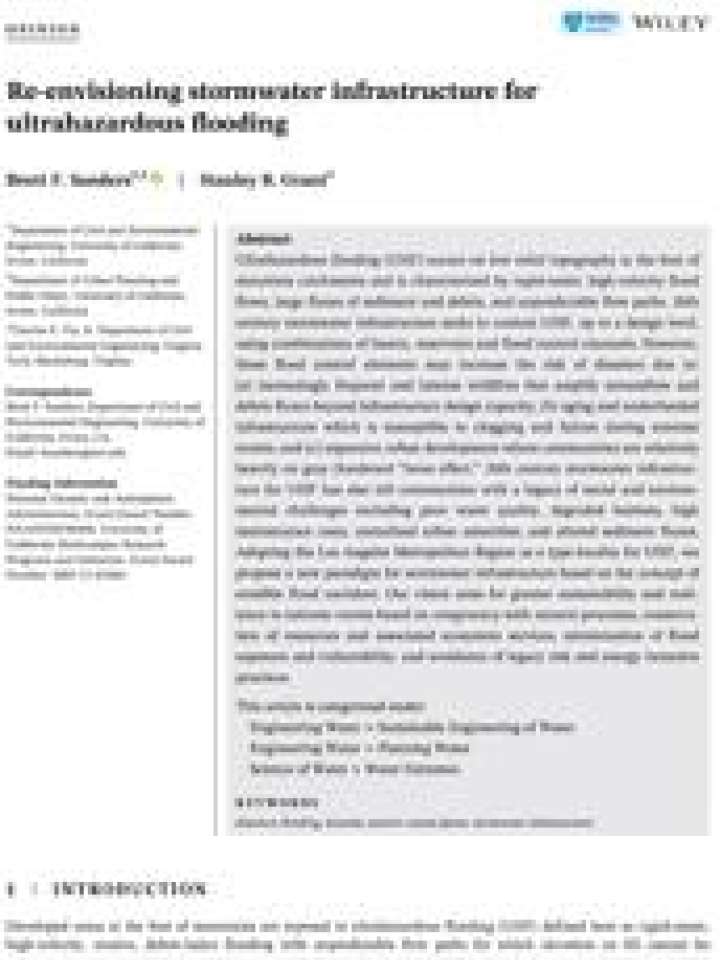Re‐envisioning stormwater infrastructure for ultrahazardous flooding
Ultrahazardous flooding (UHF) occurs on low relief topography at the foot of mountain catchments and is characterized by rapid‐onset, high‐velocity flood flows, large fluxes of sediment and debris, and unpredictable flow paths. 20th century stormwater infrastructure seeks to contain UHF, up to a design level, using combinations of basins, reservoirs and flood control channels. However, these flood control elements may increase the risk of disasters due to: (a) increasingly frequent and intense wildfires that amplify streamflow and debris fluxes beyond infrastructure design capacity; (b) aging and underfunded infrastructure which is susceptible to clogging and failure during extreme events; and (c) expansive urban development where communities are relatively heavily on gray (hardened "levee effect"); 20th century stormwater infrastructure for UHF has also left communities with a legacy of social and environmental challenges including poor water quality, degraded habitats, high maintenance costs, unrealized urban amenities, and altered sediment fluxes. Adopting the Los Angeles Metropolitan Region as a type‐locality for UHF, the study proposes a new paradigm for stormwater infrastructure based on the concept of erodible flood corridors. The researchers' vision aims for greater sustainability and resilience to extreme events based on congruency with natural processes, conservation of resources and associated ecosystem services, minimization of flood exposure and vulnerability, and avoidance of legacy risk and energy intensive practices.
Explore further
